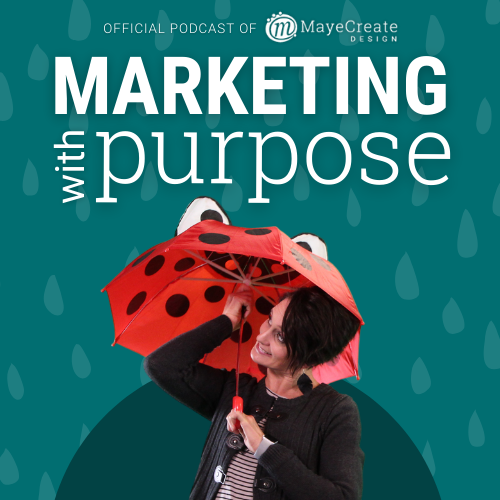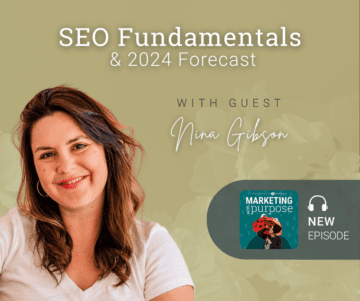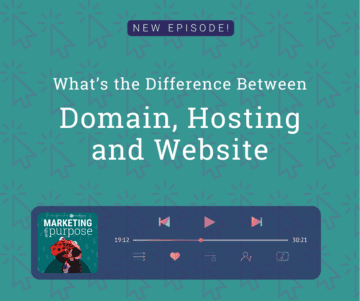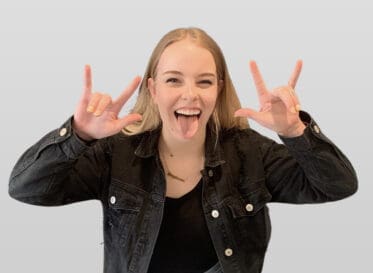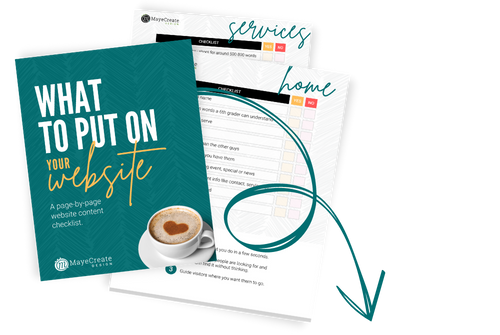Using Square to Manage Donor Data with Guest Enola White
June 3, 2022
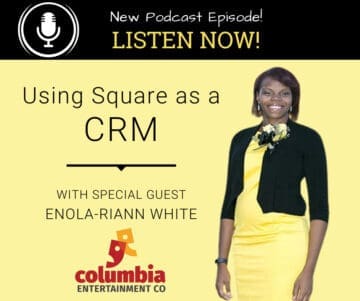
CONSUME CREATIVELY
This content is available in:
This content is available in:
AUDIO
TEXT
Today I have the pleasure of interviewing special guest Enola-Riann White. We are talking about ways that people manage their donors. A lot of people use a subscription service. But Enola’s organization is an amazing example of working with what you have. Instead of paying additional fees for another system, Enola found out she could use Square, a point of sale program, as a customer relationship management tool. Let’s find out how she does that — because if you’re not ready to invest in a dedicated CRM program, this might be a great option for you!
Podcast Summary Notes:
Monica: Why don’t you introduce yourself?
Enola: My name is Enola-Riann White, I am the executive director at Columbia Entertainment Company.
CEC is a local nonprofit community theater. We’ve been producing shows since 1979. We’re about to wrap up our 43rd season with “The Producers,” which opens on June 9. We’re actually pivoting to in-person trivia from online trivia after two years. Our trivia night is actually on Saturday, May 7, so we’re gonna see how how this in-person thing works after doing it online for two years.
Monica: How did you figure out that you can use Square to be a CRM or donor management system for you?
Enola: So the pandemic taught us a lot of different things; taught us how to make ourselves look like humans on Zoom, taught us how to talk to another human via camera, and also taught me how to use square as a CRM.
We had purchased a Square Register, because we were converting our ticketing system and we wanted to have a way for folks to buy tickets on-site at the theater. The plan was to switch to a square ticketing system, not to switch to square as the CRM management program. Probably about June or July, I was looking in Square just trying to track data and get some donation information because we were having people use square to make donations via our website. I clicked on someone’s name and all of a sudden all of this information popped up on them. And I was like, “What is this?”
Then I started Googling it and found out that square has a customer database that can be used as a CRM for small organizations. It has been fantastic for us because our budget is less than $100,000 every year. So we’re not a huge organization and we don’t have the capacity to use a paid service – but at it at this point, we don’t have a need for it. Square is good at capturing our donor information. We can also use it to capture volunteer information as well. We can track their history and their interactions with CEC.
Monica: So it sounds like this is like the first system that you’ve used for that purpose for your organization.
Enola: True, it is. Before then, we had four different people tracking things on 30 different Excel spreadsheets.
That wasn’t useful. It wasn’t a really good way to figure out who who made a recurring donation. So square has been very, very helpful.
Monica: So you originally purchased it because you were gonna sell tickets, both online and in person and take donations. Are there other needs that it fulfills for your organization?
Enola: It’s very handy for grant writing, because we can track the type of audiences.
It is part of that ticketing system. So we can see who is buying senior tickets, who is buying student tickets, who’s buying childrens tickets, and so forth. So when we have to report on how we’re selling tickets, the demographics of the people who are coming to see our shows, it’s all right there. We’re able to pull those reports for grant writing purposes and also to identify those recurring donors, because any donation to an organization is very meaningful. It doesn’t have to be a mega gift — someone who’s giving $5 Every month is just as important. So being able to see those as they arrive in real time, then being able to send them a quick thank you note and acknowledgement of their donation has been helpful too.
The thank you notes are something you do manually, of course, but this makes the whole process so much more manageable.
Monica: Before this, you just used the spreadsheets to kind of attempt to fulfill that function for you, right?
Enola: We still have a lot of spreadsheets in our company!
We still have spreadsheets, but this is much better way of tracking donations. If someone gives you a donation, you slug it in a square. If it comes in through our website, or they give at the theater, it’s still all in one space. So I don’t have to be like, “Hey, I noticed Monica didn’t give today. Is everything. Okay? Oh, no, she gave two weeks ago, it’s totally fine.” So it, it’s easier to manage in that that aspect.
Monica: It sounds like you can actually make a manual entry in square; if I wrote you a check, you could record that.
Enola: Yeah, it doesn’t just have to be with a credit card.
You have the register, which is the thing that’s at the theater, then you have the Square Reader; the attachment to your phone or your iPad. And then Square actually has a dashboard so you can log in and do things on the back end. That’s how you can create and add items. If you have a Square store, you can use the Square website store. There’s the ability to manually enter people into the customer database, or you can manually enter charges and checks.
Monica: Tell me about how it integrates with things like your email marketing.
Enola: I didn’t even think to see how square would integrate with external email marketing. But it totally does.
We use MailerLite for email marketing, and it completely interacts with the MailerLite. So we’ll be looking and exploring and getting that *Zap done to have those two talk to each other. Square does have its own email marketing system, but it just wasn’t cost effective for us. And it didn’t make sense because we already had our own external email marketing system. But I’ll definitely be looking in to see how we can *Zap all of that information and share it so that we can do more targeted marketing email marketing campaigns.
(*Zapier, here referred to as “Zap”, is a system that allows you to create connections between different software programs so that data from one can be transferred to the other and even trigger an action.)
Monica: Did you import your pre-existing data, or did you start from scratch?
Enola: I started from scratch.
Initially it was burdensome, because, like any other kind of importing system, Square has a particular way they need the data formatted before it can be uploaded and integrated. We had multiple spreadsheets spread amongst different people and the data was not coded consistently. But once it was set up, like anything else, it’s now it’s super easy to update.
Monica: Tell me about how Square reports any sort of analytical data to you.
Enola: It’s a super-intuitive and very helpful analytics dashboard.
Since Square is integrated into our register system and online ticketing system (For our online ticketing system, we use a service called SimpleTix, which integrates into square), I can log in and see who bought tickets to see August Osage County, or I can see a ticketing break down how many tickets were sold via our online ticketing system. I can see how many people were at the theater and bought a ticket hrough the register. I can track whether donors are making a physical donation at the theater, online, or through another source.
If someone contacted our operations manager, said her or she wants to give and the operations manager entered their information, I can see that as well. That’s very helpful for getting an idea of how people are actually interacting with our organization. Are they doing it primarily online in person by word of mouth?
The downside to Square is that you don’t get to choose how it displays information to you. Sometimes it’ll do a line graph. Sometimes it’ll do a bar graph and sometimes it’ll have like a color wheel. I haven’t quite figured out how to tell it to that I want to see a particular data set displayed in a particular visual format. But it’s color coded and it does track that information for you.
Monica: Is there anything Square just doesn’t report that you really wish it would?
Enola: At this time, not really, because this is our first adventure into a CRM and so far it’s doing what we need it to do.
We’ve only been using it for two years so there’s not really a whole lot of historic information in there yet. I’d say five years of information is in there. So anything that predates me being involved in the organization in my former role as treasurer and my current role as executive director isn’t in the database. So the next step is having someone input and import that information. So we can actually have a record of who has historically interacted with our organization. We can see if certain people used to interact then we lost them. Maybe then we can interact with them to figure out why and start reviving those relationships.
Monica: Do they offer any training or consulting to help you set it up?
Enola: There are training videos and different resources on their support site.
They have a pretty robust support system. I am a millennial, which means that I don’t like to talk to people, so I would prefer to use their lovely chat feature — but they do give you the option to call and talk to someone.
Monica: Tell me about the bottom line for using square; Does the CRM cost more money or is it integrated?
Enola: It’s completely integrated into square.
So if you have a square site, you have a Square store. You can log into your dashboard online and on that left side, click “customers” and you’ll see the customer database — it’s completely free.
It does charge credit card fees but there isn’t a monthly fee for using the basic account. If you’re using the email marketing feature, or their loyalty program, those have additional monthly fees.
Monica: Any final advice for people who are considering either investing in an entry level way to manage their donors, or using Square for the job?
Enola: Square is working out just fine for us.
If you’re looking for an entry level way to start interacting with donors and just tracking your donor donor interactions, if you have a square site already, and if you have a card reader you’re using for different fundraisers and events, Square is a great way to get started. If you’re a small organization like CEC, Square is a good CRM for you because it it gives you the same information that a lot of the more robust systems do.
But those systems are more robust for a reason and they have a lot of bells and whistles that your organization might not need at this time. Square is great for fundraising, donor interaction, customer interaction, volunteer management. We’re also using it to track how our volunteers are interacting with our organization through the CRM.
So it’s a really good entry level method for small organizations or someone just trying to explore what a CRM might look like for their organization. And, unlike the Excel spreadsheets that you might be keeping on everybody’s desktops, it’s all shared. I think that’s maybe the most powerful thing about it is that you have one set of data. That makes it so much cleaner and easier to use in the long run. It’s been very nice.
Monica: Tell people where they can learn more about CEC and your shows and all the fun things that you guys do over there.
Enola: We’re CEC: Columbia Entertainment Company…
We are closing out our 43rd season with “The Producers,” which opens on June 9 and will run for the last three weekends in June. Our shows are Thursday through Sunday. For Producers, we’ll have some Saturday matinees, because Juneteenth and Father’s Day fall in the middle of the run and we want to observe both of those dates — one is an important national holiday and one is a good day to hang out with your dad! So we’ll have a couple of matinees. And you can go to our website, which is www.cectheatre.org. There you cansee when our shows are, purchase tickets, make a donation via Square and become one of our fantastic donors and a member of the CEC family. We’re also on Facebook; we routinely post photos of our shows and we’re looking for volunteers. So that’s a great way to kind of see what we’re about and potentially get involved with the theater.
Monica: Do you guys do any virtual shows anymore?
Enola: We’re looking at going back to doing a few more virtual things.
We always have the availability or the option for individuals to purchase a private virtual murder mystery with us. And that’s been super popular. So if you’re interested in having a bunch of theater kids get together and try and solve a mystery, that’s a option for you as well. You can inquire via our website for that. We do have a few shows in our 44th season that will have some virtual and live streaming options and more information about that will be disclosed when we get closer to those shows. So definitely go to our website, definitely check us out on Facebook and you can be a part of CC no matter where you are.
Who Manifested This Madness?
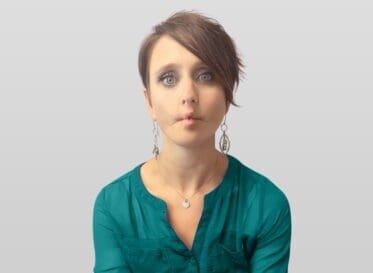
This fabulous human, that's who.
Monica Maye Pitts
Monica is the creative force and founder of MayeCreate. She has a Bachelor of Science in Agriculture with an emphasis in Economics, Education and Plant Science from the University of Missouri. Monica possesses a rare combination of design savvy and technological know-how. Her clients know this quite well. Her passion for making friends and helping businesses grow gives her the skills she needs to make sure that each client, or friend, gets the attention and service he or she deserves.

